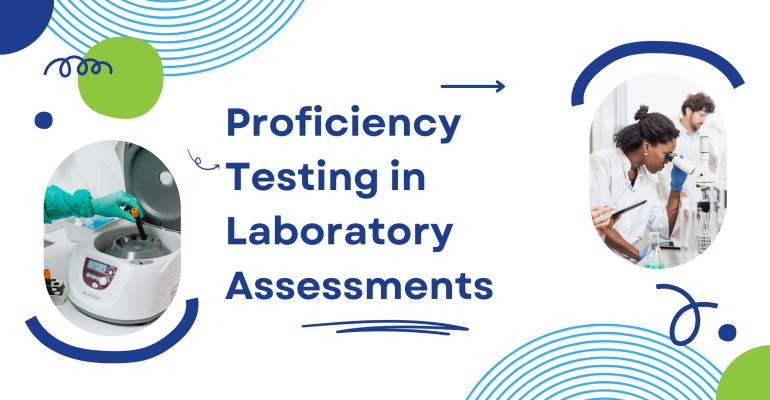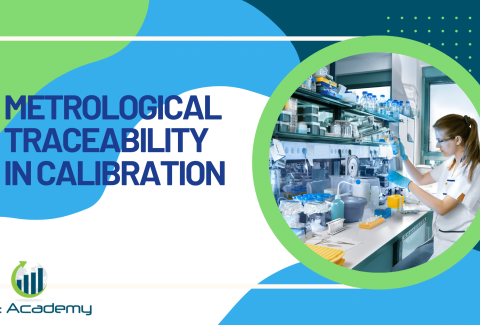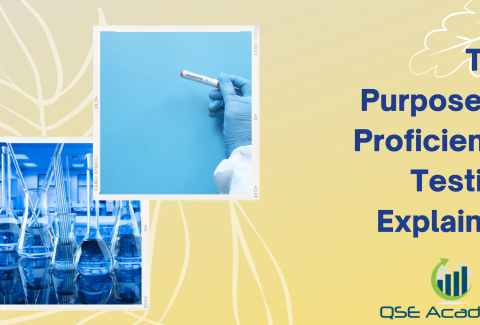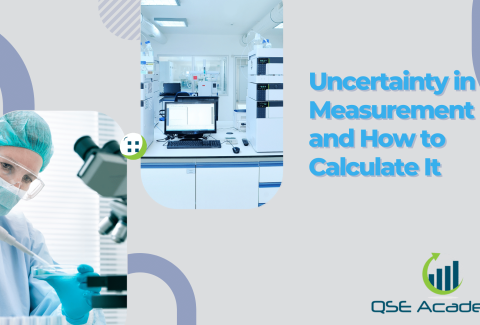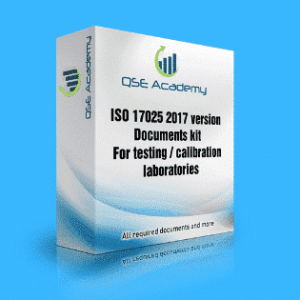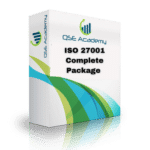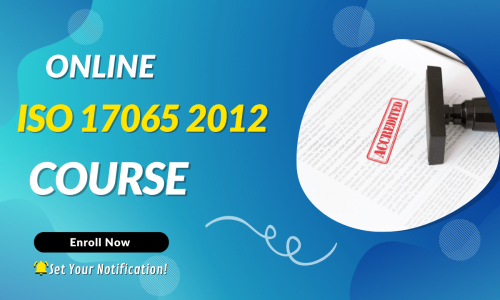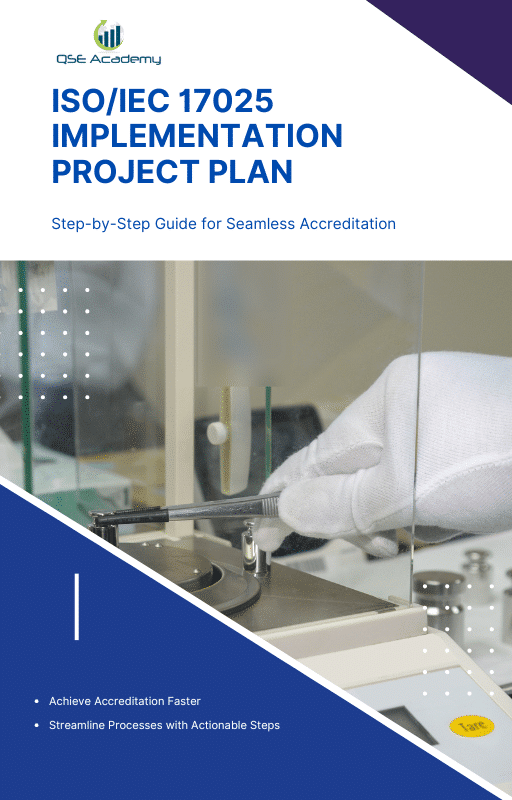Proficiency Testing in Laboratory Assessments
Proficiency Testing in Laboratory Assessments
Imagine you’re baking a cake, and you follow the recipe exactly—but when you take it out of the oven, it doesn’t taste right. Is the problem with your ingredients? Your oven? Or maybe the measurements weren’t as accurate as you thought? Now, apply this idea to laboratory testing, where even the smallest measurement error can impact research, medical diagnoses, or product quality. This is where proficiency testing comes in.
Proficiency testing is a method used to evaluate a laboratory’s ability to produce accurate and consistent results. It’s like a quality check that ensures labs are performing at the highest standards. In industries such as healthcare, pharmaceuticals, environmental science, and manufacturing, laboratories must prove that their testing methods are reliable—and proficiency testing is the key to that proof.
But why is this so important? Because precision matters. A slight variation in a medical test could lead to an incorrect diagnosis. An inaccurate reading in a food safety lab could result in contaminated products reaching consumers. Regulatory bodies, such as ISO 17025, require laboratories to participate in proficiency testing to demonstrate their competence and maintain accreditation.
In this article, we’ll break down everything you need to know about proficiency testing, from how it works to why it’s essential for laboratory assessments. Whether you’re managing a lab or simply curious about how accuracy in testing is maintained, this guide will walk you through the process in a way that’s easy to understand. Let’s dive in!
What is Proficiency Testing?
If you’ve ever taken a test in school where your answers were compared to a standard answer key, then you already understand the basic idea behind proficiency testing. In the world of laboratories, it works the same way—but instead of students answering test questions, labs are measuring, analyzing, and reporting results on specific samples to prove their accuracy.
The Definition of Proficiency Testing
At its core, proficiency testing (PT) is an external quality assessment method that helps laboratories verify their testing accuracy and reliability. It involves sending standardized test samples to multiple labs, having them analyze the samples, and then comparing their results against expected values or other participating labs. The goal is to ensure that laboratories can consistently produce correct results under real working conditions.
How Does Proficiency Testing Work?
The proficiency testing process typically follows these steps:
- A proficiency testing provider sends test samples – These are specially prepared samples with known values, but the labs don’t know the exact expected results.
- The laboratory conducts the test using its usual methods – No special procedures or changes are made—this ensures the test reflects real-world performance.
- The results are submitted for evaluation – The lab reports its findings back to the proficiency testing provider.
- Results are compared with expected values or peer laboratories – If the lab’s results match the correct values or fall within an acceptable range, it confirms that their testing is accurate. If results are outside the acceptable range, the lab must investigate and correct potential issues.
By participating in proficiency testing, laboratories can identify inconsistencies, improve their procedures, and prove their technical competence to regulatory agencies and clients.
The Role of Proficiency Testing in Quality Assurance
Proficiency testing isn’t just about passing a test—it’s about ensuring long-term accuracy and trust in laboratory results. Laboratories rely on proficiency testing to:
✅ Detect potential errors in measurement techniques before they become major issues.
✅ Validate the effectiveness of new testing methods or equipment.
✅ Maintain compliance with standards like ISO 17025, which requires regular participation in proficiency testing for accreditation.
✅ Build confidence with clients, regulatory agencies, and stakeholders by demonstrating reliable test performance.
Without proficiency testing, there would be no objective way to verify that laboratory tests are producing the right results. Inaccuracies could go unnoticed, leading to poor decision-making in industries like healthcare, food safety, and environmental monitoring.
Now that we’ve covered what proficiency testing is, let’s explore why it’s so important for laboratories and how it impacts different industries!
Why is Proficiency Testing Important?
Now that we understand what proficiency testing is, the next big question is—why does it matter so much? Can’t laboratories just trust their own internal quality checks? While internal verification is helpful, it’s not enough. Proficiency testing provides an external, unbiased assessment to ensure that lab results are accurate, consistent, and compliant with industry standards.
Here’s why proficiency testing is essential for laboratory assessments:
1. Ensuring Accuracy and Reliability
Imagine a medical lab running tests for cholesterol levels. If their testing methods are even slightly off, patients could receive incorrect results, leading to unnecessary treatments or missed health risks. Proficiency testing helps laboratories detect and correct errors before they impact real-world decisions.
- It verifies that a lab’s test results match expected values.
- It helps identify inconsistencies in equipment, reagents, or testing procedures.
- It reduces the chances of false positives or negatives in critical industries like healthcare, pharmaceuticals, and food safety.
With regular proficiency testing, labs can confidently report their results, knowing they meet the highest standards of accuracy.
2. Meeting Compliance and Accreditation Requirements
Many industries require laboratories to undergo proficiency testing to maintain certification and accreditation. Organizations like ISO 17025, the FDA, and EPA mandate participation in external proficiency testing programs to prove that laboratories operate with technical competence.
- ISO 17025-accredited labs must participate in proficiency testing as part of their ongoing quality assurance.
- Food safety laboratories need to pass proficiency testing to comply with FDA and USDA regulations.
- Environmental testing labs must demonstrate accuracy in detecting pollutants to meet EPA requirements.
Without proficiency testing, laboratories risk losing accreditation, facing regulatory fines, or having their results questioned by clients and auditors.
3. Strengthening Laboratory Credibility
Would you trust a doctor’s diagnosis if you knew their lab’s test results weren’t verified for accuracy? Probably not. The same applies to any laboratory. Proficiency testing boosts a lab’s credibility by demonstrating that its results are reliable and meet industry standards.
- Clients and regulatory agencies are more likely to trust a lab that participates in proficiency testing.
- It provides documented proof that a lab consistently produces accurate results.
- Laboratories that perform well in proficiency testing gain a competitive advantage, attracting more clients and contracts.
By investing in proficiency testing, labs can build trust and establish themselves as industry leaders.
4. Identifying and Correcting Errors Early
Even the best laboratories can experience occasional errors. Proficiency testing acts as an early warning system, allowing labs to catch and correct issues before they cause significant problems.
- If a lab’s results are outside the acceptable range, they can investigate potential causes, such as equipment drift, human error, or reagent contamination.
- It helps labs fine-tune their testing methods and improve precision.
- Continuous participation in proficiency testing ensures ongoing improvements and reduces the risk of future errors.
Instead of waiting for a client or regulatory agency to question their results, laboratories can use proficiency testing as a proactive quality control measure.
Final Thoughts on the Importance of Proficiency Testing
At the end of the day, proficiency testing is about more than just compliance—it’s about accuracy, trust, and continuous improvement. Whether it’s a medical laboratory diagnosing diseases, an environmental lab testing water quality, or a food safety lab checking for contaminants, reliable results are critical.
Next, let’s explore the different types of proficiency testing and how they apply to various laboratory settings!
Different Types of Proficiency Testing
Now that we know why proficiency testing is so important, let’s dive into the different types available. Not all proficiency testing is the same—labs in various industries need tailored assessments based on the type of analysis they perform. Whether a lab is testing for chemical contamination in food, diagnosing medical conditions, or measuring air quality, there’s a proficiency testing method designed to fit its needs.
Let’s break it down into the key types of proficiency testing and how they work.
1. Qualitative vs. Quantitative Proficiency Testing
One of the main ways proficiency testing is classified is by the type of results being measured:
✅ Qualitative Proficiency Testing – This type of testing determines whether a specific substance or characteristic is present or absent in a sample.
- Example: A food safety lab tests for the presence of E. coli bacteria in a sample. The result is either “Detected” or “Not Detected.”
- Common in medical diagnostics, microbiology, and environmental analysis.
✅ Quantitative Proficiency Testing – This involves measuring an exact value and comparing it against a known reference.
- Example: A chemical lab measures the pH level of a water sample, which should match a specified value.
- Used in pharmaceutical testing, chemical analysis, and material science labs.
Both types of proficiency testing help laboratories verify their accuracy, whether they’re identifying a substance or precisely measuring its concentration.
2. Single-Blind vs. Double-Blind Testing
Another way proficiency testing is conducted is based on whether the lab knows they’re being tested:
✅ Single-Blind Proficiency Testing – The laboratory knows it is undergoing proficiency testing, but it doesn’t know the expected results of the sample.
- This helps evaluate how well lab technicians follow standard procedures without external influence.
✅ Double-Blind Proficiency Testing – The laboratory doesn’t know that it is being tested at all. The sample is included with routine samples, making it a true real-world assessment.
- Used in high-risk industries such as forensic testing and clinical diagnostics, where unbiased accuracy is critical.
3. Interlaboratory Comparisons vs. Intralaboratory Comparisons
In some cases, proficiency testing compares multiple laboratories, while in others, it evaluates a single lab over time.
✅ Interlaboratory Comparisons – This type of proficiency testing involves multiple laboratories analyzing the same sample and comparing their results.
- If one lab’s results consistently differ from the others, it may indicate a need for process improvements.
- Common in international quality control programs and regulatory assessments.
✅ Intralaboratory Comparisons – This type of testing is done within a single lab to check for consistency over time.
- The same test is repeated periodically to ensure that results remain stable.
- Useful for detecting trends in instrument performance and identifying gradual errors before they impact results.
4. Blind vs. Open Proficiency Testing
Lastly, proficiency testing can be categorized based on whether the testing conditions are known in advance:
✅ Blind Testing – The laboratory doesn’t know which sample is the proficiency testing sample, preventing any bias in the process.
✅ Open Testing – The laboratory is aware of the proficiency testing sample and follows standard protocols to complete the assessment.
Both methods have their advantages, but blind testing is often preferred for assessing real-world performance without external influence.
Final Thoughts on Proficiency Testing Types
Different industries require different types of proficiency testing, but the goal is always the same—ensuring accuracy, reliability, and compliance. Whether a lab is measuring precise chemical concentrations, detecting pathogens, or verifying medical test results, the right proficiency testing method helps maintain the highest standards of quality.
Next, let’s walk through the step-by-step proficiency testing process and see exactly how labs participate in these assessments!
The Proficiency Testing Process Step-by-Step
Now that we’ve explored the different types of proficiency testing, let’s break down how the process actually works. Whether it’s a food safety lab checking for contaminants, a medical lab verifying test accuracy, or an environmental lab analyzing water quality, the steps of proficiency testing follow a structured approach.
Here’s a simple, step-by-step guide to how laboratories participate in proficiency testing and ensure their results meet industry standards.
Step 1: Selecting a Proficiency Testing Provider
The first step in the proficiency testing process is choosing an accredited provider. These providers prepare and distribute standardized test samples that laboratories use to evaluate their accuracy.
- Laboratories must ensure their chosen proficiency testing provider is accredited and recognized by international standards, such as ISO 17043 (which covers competence in proficiency testing providers).
- Providers offer different types of proficiency testing, so labs need to select the right test based on their field (e.g., microbiology, chemical analysis, forensic science).
- The provider ensures that test samples are prepared using scientifically validated methods to guarantee accuracy.
💡 Think of it like a well-designed exam—before taking the test, you need to make sure the questions are coming from a trusted source!
Step 2: Receiving and Handling Test Samples
Once a laboratory signs up for proficiency testing, it receives test samples from the provider. These samples are designed to mimic real-world testing materials but with one key difference—the expected result is already known by the provider (though it’s unknown to the lab).
- Proper handling is crucial to ensure the sample remains stable and uncontaminated.
- Some samples may require refrigeration, careful storage, or preparation before analysis.
- Laboratories must follow the same procedures they use for routine testing to get an unbiased evaluation of their accuracy.
💡 This step ensures that labs are testing under normal conditions, not adjusting their processes just for the sake of passing the test!
Step 3: Performing the Analysis
Now comes the actual testing. The laboratory analyzes the proficiency testing sample just as it would any other real-world sample.
- The test is conducted using the laboratory’s usual equipment, methods, and staff—no special procedures should be used.
- The goal is to measure how well the lab performs under typical working conditions.
- Any variations in how labs analyze the same sample could indicate potential errors in technique, equipment calibration, or standard operating procedures.
💡 This is like taking an open-book test, but instead of looking up answers, labs are relying on their own expertise and equipment to get the correct result!
Step 4: Submitting Results for Evaluation
Once the lab completes the test, it submits its results to the proficiency testing provider for assessment.
- The provider collects results from all participating labs and compares them against a reference value (the “correct” answer).
- Laboratories are often evaluated based on how closely their results match the expected values or the performance of peer laboratories.
- In cases of qualitative proficiency testing (e.g., detecting the presence of a pathogen), the provider checks whether the lab correctly identified the sample’s characteristics.
💡 This is like turning in your test paper and waiting for your grade—except instead of one student, multiple labs are being graded on the same test!
Step 5: Reviewing Feedback and Correcting Issues
After the proficiency testing provider reviews the results, laboratories receive a report showing their performance.
- If the lab’s results fall within the acceptable range, it confirms their testing process is accurate.
- If results are outside the expected range, the lab must investigate potential causes of error.
- The lab may need to recalibrate equipment, retrain staff, or refine testing procedures to correct inaccuracies.
💡 Mistakes in proficiency testing aren’t necessarily failures—they’re opportunities for improvement!
Step 6: Implementing Corrective Actions and Continuous Improvement
For laboratories that didn’t perform as expected, the next step is identifying what went wrong and making necessary improvements.
- Common corrective actions include checking for instrument calibration errors, ensuring reagents or chemicals are not expired, and reviewing technician handling techniques.
- Some labs may conduct additional internal tests to confirm improvements before the next proficiency testing cycle.
- Many industries require ongoing participation in proficiency testing, meaning labs must continuously refine their processes over time.
💡 The goal isn’t just to pass one test—it’s to ensure long-term accuracy and reliability in all future testing!
Final Thoughts on the Proficiency Testing Process
The proficiency testing process is more than just a checkmark for compliance—it’s a critical quality assurance tool that helps laboratories maintain high standards, prevent errors, and build trust in their results. By following a structured proficiency testing process, labs can:
✅ Confirm their testing accuracy and reliability.
✅ Stay compliant with industry regulations and accreditation standards.
✅ Identify and fix potential weaknesses before they become bigger problems.
✅ Improve overall quality, ensuring better outcomes for clients, industries, and public safety.
Now that we’ve walked through the proficiency testing process, let’s look at some common challenges laboratories face when participating in proficiency testing—and how to overcome them!
Challenges Laboratories Face in Proficiency Testing
While proficiency testing is a powerful tool for ensuring accuracy and compliance, it’s not always a smooth process. Laboratories can run into several challenges when participating in proficiency testing, from sample handling issues to interpreting results. But don’t worry—every challenge has a solution! Let’s explore some common hurdles and how laboratories can overcome them.
1. Sample Handling and Storage Issues
One of the first challenges in proficiency testing happens before the test even begins—proper sample handling. If a test sample is mishandled, it can lead to incorrect results and a false assessment of a lab’s performance.
🔍 Common problems:
- Sample contamination due to improper storage conditions.
- Temperature-sensitive samples being exposed to heat or cold.
- Incorrect labeling or mix-ups leading to testing the wrong sample.
💡 How to solve it:
- Follow strict storage guidelines provided by the proficiency testing provider.
- Assign a dedicated staff member to receive, log, and store samples properly.
- Use calibrated temperature-controlled storage for sensitive samples like biological specimens or chemical solutions.
By ensuring proper handling, laboratories can eliminate unnecessary errors before testing even starts!
2. Interpreting Proficiency Testing Results
Once results are submitted, labs receive feedback on their performance. But what happens if results don’t match the expected values? Understanding what went wrong—and how to fix it—can sometimes be tricky.
🔍 Common problems:
- Unclear feedback from proficiency testing providers, making it difficult to pinpoint the issue.
- Difficulty distinguishing between a true error and normal variations in measurement.
- Uncertainty about whether the problem lies in the testing method, equipment, or technician performance.
💡 How to solve it:
- Compare results against peer laboratories to identify potential inconsistencies.
- Work closely with proficiency testing providers to clarify evaluation criteria.
- Conduct internal audits by re-testing the sample under controlled conditions.
- Review standard operating procedures (SOPs) to see if adjustments are needed.
By taking a step-by-step approach to troubleshooting, laboratories can turn proficiency testing failures into valuable learning experiences.
3. Meeting Regulatory and Accreditation Requirements
For many labs, participation in proficiency testing isn’t optional—it’s a requirement for maintaining certifications like ISO 17025. But keeping up with these obligations can be challenging, especially for small labs with limited resources.
🔍 Common problems:
- Keeping track of multiple proficiency testing deadlines.
- Managing documentation for regulatory audits.
- Ensuring participation in the correct proficiency testing programs based on accreditation needs.
💡 How to solve it:
- Use a digital tracking system or LIMS (Laboratory Information Management System) to schedule and monitor proficiency testing deadlines.
- Keep organized records of past results, corrective actions, and compliance documents.
- Stay updated on industry regulations and seek guidance from accreditation bodies.
By taking a proactive approach, laboratories can streamline compliance and avoid last-minute stress when audits come around.
4. Cost of Proficiency Testing Programs
Let’s be honest—participating in proficiency testing isn’t always cheap. Some programs, especially those required for high-risk industries, can be costly, making it difficult for smaller laboratories to keep up.
🔍 Common problems:
- High costs of proficiency testing programs for multiple tests.
- Limited budget for continuous participation.
- Balancing cost vs. quality—choosing the right proficiency testing provider.
💡 How to solve it:
- Prioritize critical tests—focus on proficiency testing programs required for accreditation first.
- Look for government-funded or industry-sponsored programs that help offset costs.
- Partner with other laboratories to participate in group-based proficiency testing, reducing costs per lab.
While proficiency testing has costs, it’s an investment in quality and compliance that can prevent much more expensive mistakes in the long run.
5. Managing Staff Training and Consistency
A laboratory is only as good as the people running it. If technicians aren’t properly trained, they may unintentionally introduce errors during proficiency testing.
🔍 Common problems:
- Inconsistent testing techniques among different staff members.
- Lack of awareness about proficiency testing procedures.
- Human error leading to variations in results.
💡 How to solve it:
- Conduct regular training sessions for lab personnel on proficiency testing protocols.
- Assign senior staff members to oversee testing and double-check critical steps.
- Rotate personnel so that multiple team members are familiar with proficiency testing procedures.
By ensuring that all technicians are well-trained, laboratories can reduce variability in results and improve their overall proficiency testing performance.
Final Thoughts on Proficiency Testing Challenges
While proficiency testing presents some challenges, these obstacles are manageable with the right strategies in place. By focusing on proper sample handling, clear result interpretation, regulatory compliance, cost management, and staff training, laboratories can successfully navigate proficiency testing and maintain the highest levels of accuracy.
Now that we’ve tackled the challenges, let’s explore best practices for successful proficiency testing to ensure your lab gets the most out of the process!
Best Practices for Successful Proficiency Testing
Now that we’ve covered the challenges of proficiency testing, let’s talk about how laboratories can set themselves up for success. A well-executed proficiency testing program isn’t just about passing assessments—it’s about improving accuracy, building confidence in test results, and maintaining compliance with industry standards.
By following these best practices, laboratories can get the most out of proficiency testing while avoiding common pitfalls.
1. Establish a Proficiency Testing Schedule
One of the biggest mistakes a lab can make is treating proficiency testing as a one-time event rather than an ongoing process. Regular participation is key to maintaining accuracy and regulatory compliance.
✅ Plan ahead – Set up a proficiency testing schedule based on regulatory requirements and lab needs.
✅ Track due dates – Use a digital tracking system or a Laboratory Information Management System (LIMS) to ensure no deadlines are missed.
✅ Prioritize critical tests – Focus on tests that are essential for accreditation and regulatory compliance.
💡 Think of it like routine maintenance for your car—regular check-ups ensure everything runs smoothly!
2. Train Staff on Proficiency Testing Procedures
A well-trained team is essential for getting accurate proficiency testing results. If staff members are unclear on testing protocols, errors can slip through unnoticed.
✅ Conduct regular training sessions – Keep all lab personnel updated on proficiency testing protocols and best practices.
✅ Standardize procedures – Ensure all staff follow the same step-by-step method for handling and analyzing proficiency testing samples.
✅ Perform internal mock tests – Running internal proficiency testing exercises can help identify weaknesses before an official test.
💡 Consistency is key! If multiple technicians handle the same test, they should all get the same results.
3. Follow Standard Operating Procedures (SOPs) for Testing
One major goal of proficiency testing is to evaluate how well a laboratory follows its standard methods. That means labs should handle proficiency testing samples exactly as they would real-world samples.
✅ Use routine testing methods – Avoid changing procedures just for the sake of passing the test.
✅ Avoid bias – Treat proficiency testing samples like normal samples to get an accurate measure of performance.
✅ Document every step – Keeping detailed records ensures traceability in case of unexpected results.
💡 Imagine taking a driving test—if you follow your usual safe driving habits, you’ll pass without needing to change anything!
4. Carefully Review and Verify Results Before Submission
Submitting incorrect proficiency testing results can raise red flags, even if the mistake was just a simple typo or calculation error.
✅ Double-check data entries – Ensure all results are accurately recorded before submission.
✅ Verify calculations – Mistakes in unit conversions or rounding can cause unnecessary failures.
✅ Have a second person review the results – A fresh set of eyes can catch potential errors before submission.
💡 Think of it as proofreading an important email before hitting “send”—a quick review can prevent unnecessary mistakes!
5. Learn from Proficiency Testing Results (Even When You Pass!)
Many laboratories only focus on proficiency testing results when they receive a failing score, but even good results can provide valuable insights.
✅ Analyze trends over time – Look at past proficiency testing results to identify any gradual shifts in accuracy.
✅ Address small deviations early – Even minor inconsistencies should be investigated to prevent future problems.
✅ Use results to improve quality control – Apply proficiency testing insights to refine lab procedures and enhance overall performance.
💡 Think of it like tracking your fitness progress—even when you’re doing well, there’s always room to improve!
6. Implement Corrective Actions When Necessary
If a laboratory receives a failing score on a proficiency testing assessment, it’s not the end of the world. The key is to identify what went wrong and take corrective action.
✅ Identify the root cause – Was the issue due to human error, equipment calibration, or procedural inconsistencies?
✅ Re-test internally – Running additional internal tests can help confirm whether the issue has been resolved.
✅ Document corrective actions – Keeping records of improvements shows auditors that the lab takes quality control seriously.
💡 Mistakes happen! The most important thing is learning from them and making improvements for the future.
Final Thoughts on Proficiency Testing Best Practices
Proficiency testing isn’t just a compliance requirement—it’s an opportunity for laboratories to refine their skills, validate their testing methods, and ensure they’re delivering reliable results. By following best practices like scheduling regular tests, training staff, verifying results, and continuously improving procedures, laboratories can use proficiency testing as a powerful tool for success.
Next, let’s look at the future of proficiency testing and how technology is making the process more efficient and reliable!
The Future of Proficiency Testing
As industries evolve and technology advances, proficiency testing is also undergoing exciting transformations. Laboratories are constantly looking for ways to improve accuracy, efficiency, and compliance, and the future of proficiency testing is all about making the process faster, smarter, and more reliable.
Let’s explore some of the latest trends and innovations shaping the future of proficiency testing and how they are improving laboratory assessments.
1. Automation and AI in Proficiency Testing
Gone are the days of manually recording and analyzing results. With the rise of artificial intelligence (AI) and automation, laboratories are streamlining their proficiency testing processes like never before.
✅ AI-powered data analysis – AI can quickly analyze proficiency testing results, detect patterns, and highlight potential errors before they become major issues.
✅ Automated sample processing – Robotic systems are being used to handle test samples, reducing human error and improving consistency in proficiency testing.
✅ Smart algorithms for trend analysis – AI-driven tools can monitor a lab’s historical proficiency testing performance and predict potential deviations.
💡 Think of it like using a GPS instead of an old paper map—AI helps labs navigate the calibration process more efficiently and with fewer mistakes!
2. Cloud-Based Proficiency Testing Management
Managing proficiency testing records, scheduling, and reporting used to require stacks of paperwork and spreadsheets. Now, cloud-based platforms are making it easier than ever to organize and track proficiency testing participation.
✅ Real-time access to proficiency testing results – Cloud platforms allow laboratories to review results anytime, anywhere.
✅ Automated notifications for upcoming tests – Labs receive alerts when it’s time to participate in proficiency testing, ensuring deadlines aren’t missed.
✅ Instant report sharing – Instead of manually compiling reports for audits, labs can generate and share proficiency testing records with a single click.
💡 Imagine having a digital assistant that reminds you when your car needs maintenance—cloud-based platforms do the same for proficiency testing in laboratories!
3. Remote and Virtual Proficiency Testing
Traditionally, proficiency testing required labs to receive physical samples, perform tests, and send results back to the provider. But with advancements in digital technology, virtual and remote proficiency testing is becoming a reality.
✅ Digital proficiency testing – Some tests can now be conducted using virtual simulations, eliminating the need for physical samples.
✅ Remote result verification – Laboratories can upload results instantly, allowing for faster evaluations and feedback.
✅ Decentralized interlaboratory comparisons – Labs around the world can participate in global proficiency testing programs without delays caused by shipping physical samples.
💡 Think of it like taking an online exam instead of a paper test—digital solutions make proficiency testing more accessible and convenient!
4. Blockchain Technology for Traceability
One of the biggest challenges in proficiency testing is maintaining data integrity and traceability. Blockchain technology is now being explored as a way to create tamper-proof records of proficiency testing results.
✅ Secure and transparent record-keeping – Blockchain ensures that proficiency testing results cannot be altered or falsified.
✅ Instant verification of test performance – Auditors and regulatory bodies can quickly check the authenticity of a lab’s proficiency testing history.
✅ Global standardization of proficiency testing data – Laboratories worldwide can use blockchain to verify their compliance with international standards.
💡 Think of blockchain like a digital notary—once a record is created, it can’t be changed, ensuring trust and reliability in proficiency testing!
5. Personalized and Adaptive Proficiency Testing
No two laboratories are exactly the same, which is why proficiency testing is moving toward more customized and adaptive approaches. Instead of a one-size-fits-all model, future proficiency testing programs will be tailored to each lab’s specific needs.
✅ Risk-based proficiency testing – High-risk industries (like pharmaceuticals and healthcare) will have more frequent and detailed proficiency testing, while low-risk applications will have more flexible schedules.
✅ Adaptive testing based on past performance – Labs with a strong track record may have extended intervals between tests, while those with inconsistencies will receive additional assessments.
✅ Custom test samples – Instead of generic test samples, laboratories will receive proficiency challenges based on their real-world testing conditions.
💡 Think of it like a fitness program that adapts to your progress—proficiency testing will become more personalized and efficient over time!
Final Thoughts on the Future of Proficiency Testing
The future of proficiency testing is bright, with innovations that make laboratory assessments more efficient, accurate, and transparent. AI, cloud-based platforms, remote testing, blockchain, and personalized testing approaches are all transforming how laboratories ensure quality and compliance.
By embracing these advancements, laboratories can stay ahead of industry standards, improve efficiency, and continue delivering accurate and reliable test results.
Now, let’s wrap things up with a final look at why proficiency testing remains a cornerstone of laboratory quality assurance!
Conclusion: Why Proficiency Testing is Essential for Laboratory Quality
After exploring the ins and outs of proficiency testing, one thing is crystal clear—this process is more than just a compliance requirement. It’s a critical tool that ensures laboratory accuracy, reliability, and trustworthiness. Whether in healthcare, environmental science, food safety, or manufacturing, proficiency testing helps laboratories maintain the highest standards of quality.
Without proficiency testing, laboratories would have no objective way to verify that their results are accurate. Errors could go undetected, leading to incorrect diagnoses, unsafe products, or regulatory non-compliance. By participating in proficiency testing, laboratories can:
✅ Ensure accuracy and consistency – Regular assessments confirm that a lab’s test results are precise and reliable over time.
✅ Maintain regulatory compliance – Accreditation bodies like ISO 17025, FDA, and EPA require laboratories to take part in proficiency testing to prove their technical competence.
✅ Identify and correct errors early – Rather than waiting for a client or auditor to point out inconsistencies, labs can proactively detect and fix issues through proficiency testing.
✅ Build credibility and trust – Clients and regulatory agencies are more likely to trust a lab that consistently demonstrates accurate and reliable performance in proficiency testing.
✅ Adapt to new technologies – With advancements in automation, cloud-based platforms, and blockchain, proficiency testing is becoming even more efficient and accessible.
At the end of the day, proficiency testing isn’t just about passing a test—it’s about continuous improvement. Laboratories that embrace proficiency testing as a regular quality assurance tool can stay ahead of industry changes, reduce risks, and confidently deliver results that customers and regulators can trust.
So, if your lab hasn’t prioritized proficiency testing yet, now is the perfect time to start. Because in the world of laboratory assessments, accuracy isn’t just an expectation—it’s a responsibility.
I hold a Master’s degree in Quality Management, and I’ve built my career specializing in the ISO/IEC 17000 series standards, including ISO/IEC 17025, ISO 15189, ISO/IEC 17020, and ISO/IEC 17065. My background includes hands-on experience in accreditation preparation, documentation development, and internal auditing for laboratories and certification bodies. I’ve worked closely with teams in testing, calibration, inspection, and medical laboratories, helping them achieve and maintain compliance with international accreditation requirements. I’ve also received professional training in internal audits for ISO/IEC 17025 and ISO 15189, with practical involvement in managing nonconformities, improving quality systems, and aligning operations with standard requirements. At QSE Academy, I contribute technical content that turns complex accreditation standards into practical, step-by-step guidance for labs and assessors around the world. I’m passionate about supporting quality-driven organizations and making the path to accreditation clear, structured, and achievable.

